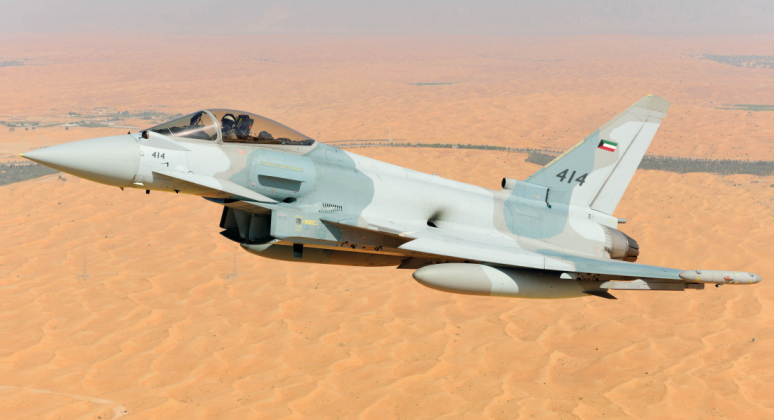The Spanish Air Force is set to acquire 20 new Eurofighter medium weight twin engine aircraft, including 16 single seater and four twin seater jets under a €2.043 billon ($2.15 billion) contract. This comes amid rising tensions with neighbouring Algeria, and as Spain has taken a disproportionately large role in supporting Ukraine and placing further military on Russia as part of a joint Western effort. Signed at the Berlin Airshow, the acquisition will expand the Spanish Air Force’s Eurofighter fleet to 89 aircraft and allow it to phase its older F-18C/D Hornet jets out of service, with plans for such purchases to replace the ageing Cold War era jets having been announced in October 2020. Unlike Eurofighters previously acquired by European countries, the aircraft set to be built for Spanish service will integrate the Captor-E active electronically scanned array (AESA) radar which provides a very significant improvement over the sensor suites of older variants. Although AESA radars have been in use since 2000 in the U.S. Air Force, with the first serial production fighter to integrate them as its standard sensor being the Japanese F-2 in 2002, it remains a relatively new technology for fighters in Europe and Russia which remain behind the United States and East Asian aviation powers in the field.
At just $108 million per aircraft, the price of the Eurofighters ordered by Spain was particularly notable when compared to those with the same sensor suite and similar avionics sold to Kuwait. The prior contract cost the Kuwaiti Defence Ministry $321 million each per aircraft – essentially three times as much. This was despite Kuwait ordering a slightly larger quantity – 28 aircraft – which were by some estimates the most expensive fighters ever exported. The price of the Kuwaiti Eurofighters caused significant controversy in the country’s parliament, particularly when their cost was compared to the heavier and in many ways more capable F-18E/F Super Hornet fighters acquired from the United States in parallel which were considerably cheaper.

The Eurofighter has been in production for close to 25 years, and new airframes are expected to be built in Britain which alongside Spain, Germany and Italy was one of the four partner countries in the program. The Eurofighter was initially part of the same program as the better known and more widely exported French Rafale fighter, before France moved to develop its own aircraft separately, and has struggled on export markets for a number of reasons. While the Rafale’s engines are the weakest of any fighter in the world in production today, giving the Eurofighter advantages in manoeuvrability and climb rate, the pan-European jet suffers from a lack of comparable electronic warfare capabilities, higher operational costs and a significantly shorter range. Perhaps its most notably shortcoming, however, has been its continued reliance on a mechanically scanned array radar making it the last major fighter program in the world to do so, with Soviet fighters since the early 1980s and American ones since the 2000s having used electronically scanned phased array radars. The Rafale entered service in 2001 using a passive electronically scanned array radar, with variants entering service from 2013 using AESA radars, leaving the Eurofighter program very far behind and only moving past mechanically scanned array radars in 2020 with construction of Captor E equipped jets for Kuwait. Eurofighters built before then were criticised for the susceptibility of their sensors to jamming and their limited situational awareness and electronic warfare options.
